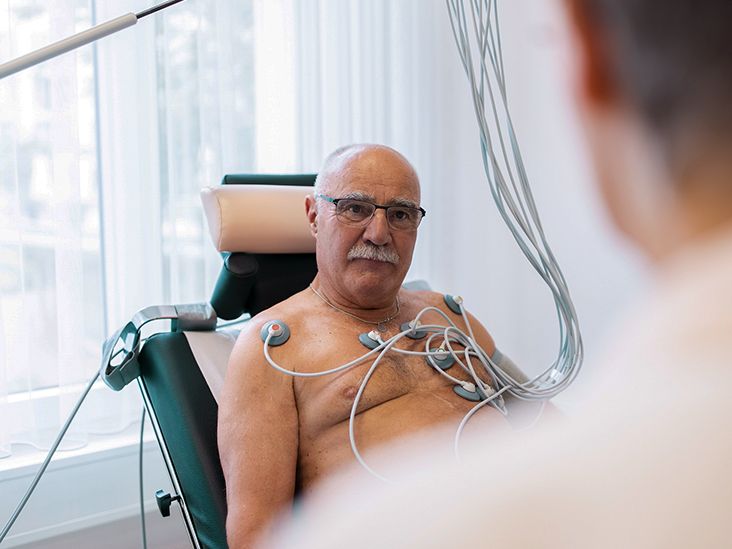
Understanding the Pharmacologic Nuclear Stress Test: No Treadmill Required
A pharmacologic nuclear stress test is a valuable diagnostic tool that evaluates your risk of serious cardiac events. Depending on your overall health, your physician may suggest either a traditional treadmill test or a chemical alternative, which utilizes medications to mimic the effects of exercise on your heart.
This noninvasive test aims to identify your heart's performance under stress and is essential in assessing potential risks associated with cardiac diseases. The nuclear stress test incorporates imaging technology to visualize blood flow to your heart during the examination.
What to Expect During a Pharmacologic Nuclear Stress Test
During a pharmacologic nuclear stress test, trained technologists will attach electrocardiogram (EKG) leads to your chest to monitor your heart's electrical activity, alongside continuous observation of your heart rate, blood pressure, and oxygen levels.
A small dose of radioactive tracer is administered through an intravenous (IV) line, allowing healthcare practitioners to assess blood circulation using advanced imaging techniques such as Positron Emission Tomography (PET) or Single Photon Emission Computed Tomography (SPECT). The first set of images will capture your heart functioning at rest.
The pharmacologic stress agents administered through the IV replicate the heart's response to exercise. Commonly used agents include:
- Adenosine
- Dipyridamole
- Dobutamine
- Regadenoson
These agents work by widening your heart's blood vessels, although those that are damaged might not respond adequately. After your heart reacts to the medications, a second round of imaging will occur to assess how well your heart operates under "stress." You may notice an increase in your heart rate, but you should not experience any pain during the procedure.
Reasons for Selecting a Non-Treadmill Stress Test
Doctors often recommend stress testing, especially before surgeries such as heart or vascular operations. While the standard exercise stress test typically involves treadmill activity, a pharmacologic stress test is a suitable alternative for individuals facing certain medical conditions, such as:
- Acute pulmonary embolism
- Acute pericarditis
- Acute myocarditis
- Systolic blood pressure greater than 200 mm Hg while at rest
- Aortic stenosis history
- Recent myocardial infarction (heart attack)
- Poorly controlled heart failure
- Severe pulmonary hypertension
- Unstable angina (resting chest pain)
The pharmacologic approach is particularly recommended for individuals unable to perform physical exercises due to movement restrictions or for those who did not pass an exercise test.
Duration of a Non-Treadmill Nuclear Stress Test
A pharmacologic nuclear stress test usually lasts a few hours, which includes setup time and two imaging rounds, separated by a waiting period. After administering the tracer, it may take between 15 to 60 minutes for it to take effect. The timespan can vary based on the specific agents used, so consult with your healthcare provider for detailed information regarding your specific situation.
Pre-Test Preparation Guidelines
Preparation for your nuclear stress test may vary depending on the specific agent chosen by your physician. For instance, if you will be receiving adenosine, you should avoid caffeine products and certain medications for at least 12 hours before the test. For a dobutamine-based test, please refrain from beta-blockers for 24 hours beforehand. Additional preparation steps include:
- Avoid eating or drinking for at least three hours prior to the test. Water is usually acceptable.
- Refrain from smoking or using tobacco products for at least eight hours before the procedure.
- Consult your physician regarding any medications you should withhold before the test.
- Avoid applying lotions or creams to your chest, as this may interfere with EKG lead adhesion.
Post-Test Detoxification
Following a nuclear stress test, your body typically eliminates the administered medications quickly. Most individuals do not experience lingering effects after about 10 to 15 minutes post-procedure.
Common Concerns Addressed
Is a Pharmacologic Nuclear Stress Test Safe?
Though termed a “stress” test, it is designed to exercise your heart minimally, with healthcare providers monitoring for any side effects, which are generally rare. Potential but uncommon side effects can include:
- Heart block
- Bronchospasm
- Tachyarrhythmia
Will I Be Radioactive After the Test?
You will receive a small quantity of radioactive tracer during the test, but this does not result in lingering radioactivity in your body. Your radiation exposure will be comparable to that of a standard X-ray or CT scan.
Is Throat Numbing Necessary?
For a non-treadmill nuclear stress test, throat numbing isn't required. However, if a transesophageal echocardiogram is part of your testing, throat-numbing medications may be employed.
Conclusion
A pharmacologic nuclear stress test serves as an effective means to determine your risk of heart attacks and other adverse cardiac events. Your healthcare provider will offer specific instructions on how to prepare, encompassing dietary restrictions, medication adjustments, and other essential guidelines leading up to the test.
Reading Can You Take a Nuclear Stress Test Without a Treadmill?
